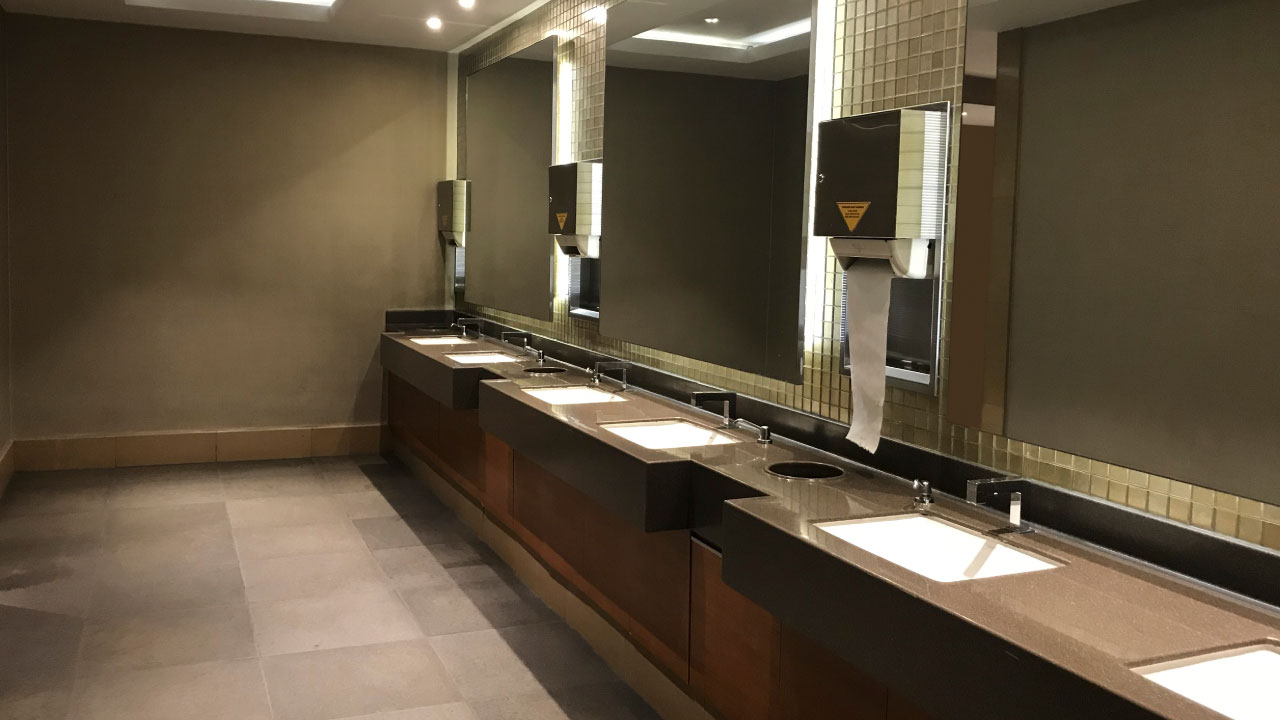Blogs
The Benefits of Smart Bathroom Technology in a Post-Pandemic World

Post-pandemic, Smart washroom technology has offered more than just efficiency and convenience – it has become a necessity. Providing valuable data to inform better FM decision-making, it ensures bathrooms are always clean, safe, and functional public spaces.
The global pandemic reshaped many aspects of our lives. Perhaps the most significant impact it had was on our approach to hygiene. As COVID quickly took over the world, we all became more aware of how easily viruses can spread, forcing us to rethink the importance of cleanliness.
Fast forward a year or so, and the COVID figures eventually started to drop. Life began to return to some sort of normality. But as people ventured back into busy spaces like offices, malls and airports, businesses were forced to reevaluate their approach to hygiene. They had to consider things like social distancing and mitigating the spread of viruses in high-traffic commercial spaces, in order to keep customers safe.
The problem with traditional washrooms
While washrooms have always been a focal point in FM hygiene efforts, the pandemic underscored the importance of keeping such busy spaces clean like never before.
A standard commercial washroom welcomes hundreds of visitors every hour, meaning shared facilities can easily become very unhygienic. There are multiple high-touch surfaces, which, without regular cleaning and maintenance, can become a breeding ground for nasties.
Taps, flushes and soap dispensers are frequently touched by multiple users, often without being cleaned in between uses, facilitating the spread of viruses and bacteria.
Washrooms are also naturally moist environments, exacerbating hygiene concerns by providing ideal conditions within which pathogens can live and thrive, both on surfaces and in the air.
A Smarter reality
In our new, post-pandemic reality, Smart washroom technology has emerged as a vital solution, promoting hygiene, health and safety.
Smart bathrooms integrate IoT environmental and operational sensors that not only improve convenience and improve user experience, but they also significantly reduce contact with surfaces and enhance sanitation.
With features such as touchless operation, automated cleaning systems, and real-time occupancy monitoring, the innovative systems help prevent the spread of germs, support social distancing, and ensure that hygiene standards are consistently maintained, making them essential in our efforts to create safer public spaces.
Touchless technology
No-touch technology is proven to be one of the most effective ways to reduce the spread of viruses in public places. Innovative sensor-driven technologies cut out physical contact with surfaces, and in turn, safeguard against the spread of infections.
Sensors can be added just about anywhere that a user needs to touch, such as flushes, faucets, soap dispensers, and hand dryers, lowering the risk of cross contamination and reducing the potential for disease transmission.
Sensors not only improve hygiene standards, but they also improve the functionality of a washroom. By monitoring consumable levels in real time, and sending alerts to staff when levels are low, things like soap and sanitizer are always stocked up. This not only improves user satisfaction but gives the public the resources they need to keep their hand hygiene in order.
Enhanced social distancing
Another crucial aspect of Smart bathroom technology is its ability to help users adhere to social distancing guidelines. Occupancy sensors monitor the number of people in a bathroom at any given time, providing real-time updates via digital screens, allowing them to make informed decisions about when to enter.
In larger facilities, these systems can direct users to quieter restrooms, preventing overcrowding and ensuring that social distancing measures are maintained. This not only enhances the safety of users but also reduces stress and uncertainty in shared spaces.
Data-driven insights
Offering a wealth of data across numerous parameters, Smart washroom technology drives better decision making for FM teams, and ultimately, better cleaning.
Leveraging cloud-based software, automated technology and built-in sensors gather vast amounts of data to guide staff. Water sampling can detect bacteria levels, air purification systems can manage pathogen levels and HVAC systems can maintain the air at a temperature that doesn’t promote virus growth.
The data also alerts staff to any unhygienic situations, such as water spills or leaking urinals, allowing them to take immediate action. And with real-time information on visitor numbers, as well as trend analysis anticipating high-traffic times, cleaning schedules can be optimized and the frequency of cleans increased when needed.
With so much information at their fingertips, FM teams can take a proactive rather than reactive approach to washroom cleanliness.
A Smarter, cleaner future for washrooms
The pandemic taught us many things, but it continues to shape our approach to health and safety. Smart washroom technology has played a crucial role in creating more hygienic public spaces, changing the way FM teams approach cleanliness.
From touchless taps to cubicle occupancy sensors, these scalable innovations have revolutionized the way we think about bathroom hygiene, allowing commercial businesses to not only meet current demands for cleanliness, but also prepare us for whatever the future may have in store.
Latest Posts
World Earth Day: Advancing Water Sustainability with Smart Washroom Sensors
April 22 marks Earth Day, a global event dedicated to environmental protection and sustainability.
Why the Smart Washroom market is set for explosive growth in 2025
Smart washroom technologies have revolutionized the public restroom experience.
Smart Washrooms in Airports
Modern airports are busy spaces. With millions of passengers transiting daily, efficiency and cleanliness are more than conveniences – they are necessities.
Greenwashing in the Washroom – are Eco-Friendly Products all They Appear?
With sustainability a key focus across all sectors, many brands are now engaging in ‘greenwashing’ – the practice of misleading consumers by exaggerating environmental benefits.
The Future of Washrooms: How Smart Solutions Are Redefining Hygiene, Sustainability, and User Experience
The traditional washroom has undergone a significant transformation in recent years. Often viewed as a basic space with limited functions,
